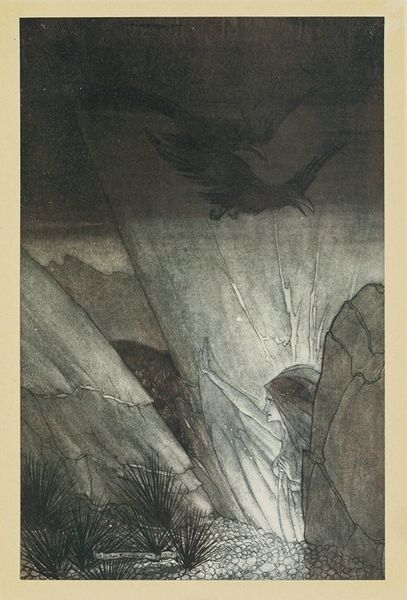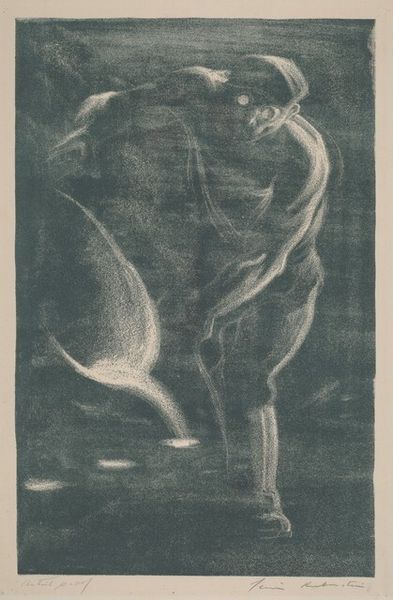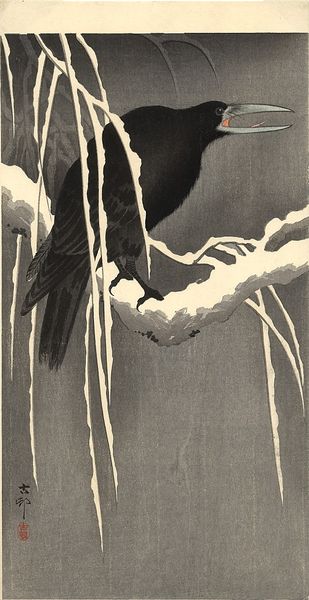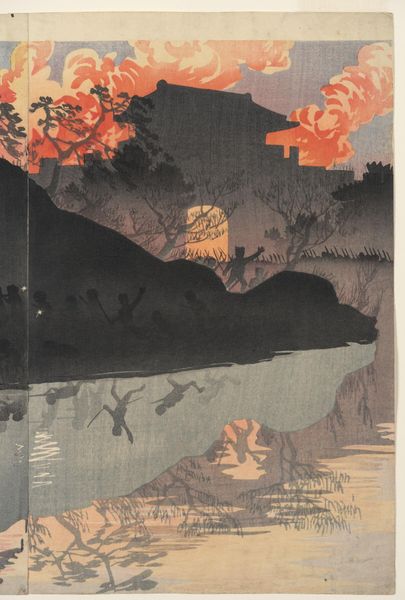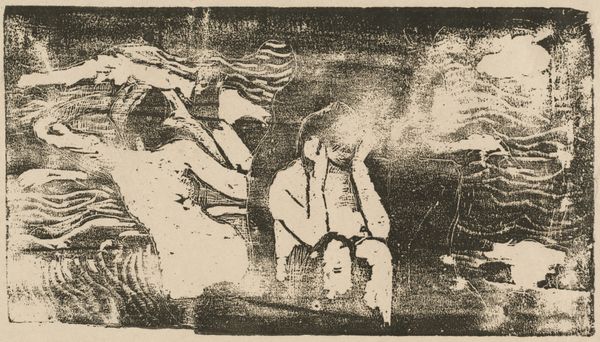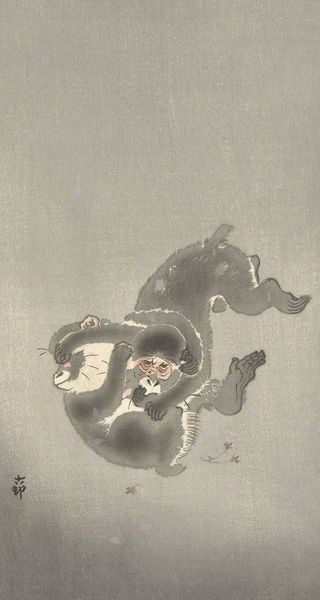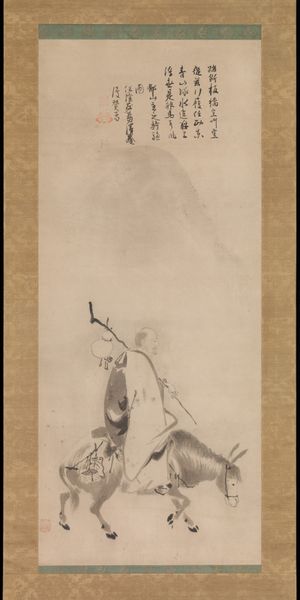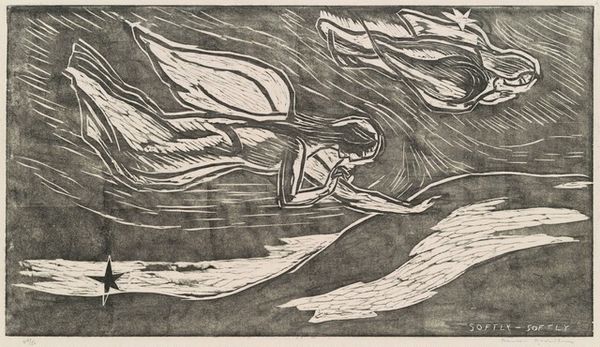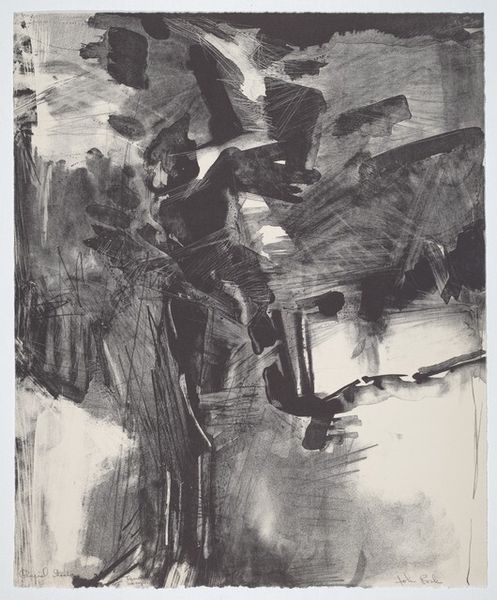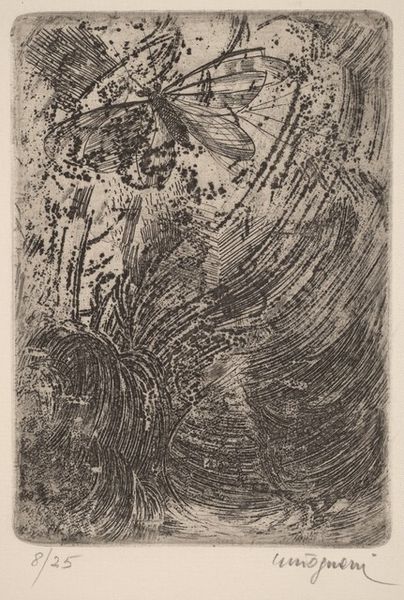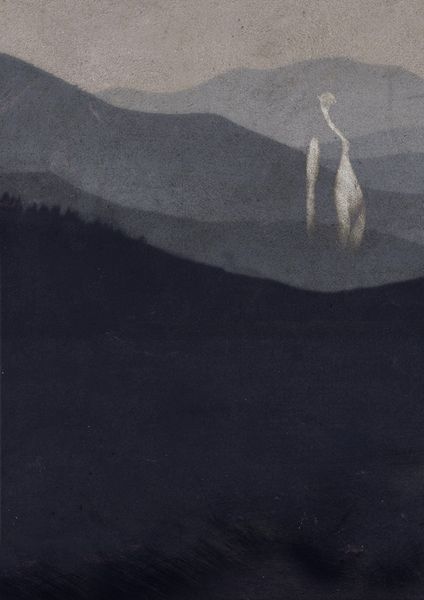
print, ink
#
ink painting
# print
#
landscape
#
ink
#
abstraction
Copyright: National Gallery of Art: CC0 1.0
Editor: This is Hideo Hagiwara's "Leaves" from 1960, an ink print. The composition is really striking with these dark, looming shapes framing the leaves, creating such a moody atmosphere. What do you make of it? Curator: Well, placed in its historical context, Hagiwara’s abstraction moves away from earlier Japanese artistic restrictions but also grapples with a renewed national identity in postwar Japan. Ink prints allowed artists to explore new visual vocabularies accessible to the public through affordable prints. This blend of traditional materials and abstract forms becomes a kind of visual negotiation. Does that resonate with your perspective on this piece? Editor: That's fascinating. I hadn't considered the socio-political aspect of printmaking. It adds another layer to the visual language, seeing the “leaves” as both botanical and metaphorical, hinting at renewal perhaps? Curator: Exactly. Consider the role of abstraction more broadly during the Cold War. In what ways could Hagiwara be perceived to operate inside or outside such trends? Think also of the global rise of printmaking: it becomes increasingly seen as a vehicle for democratic dissemination, even subversion, particularly from the 60's onwards. Editor: It’s interesting to consider how art became politicized, even landscape art like this piece. The context you are giving provides some entry point to view art from other cultures too, from Japan to Latin America. Curator: Precisely, these visual dialogues speak volumes about an era’s tensions and aspirations, challenging the neutrality that museums or institutions may wish to assign to artistic expression. What I like most is your reading of this piece! Editor: Absolutely, and I now see beyond just the composition. Thanks!
Comments
No comments
Be the first to comment and join the conversation on the ultimate creative platform.

